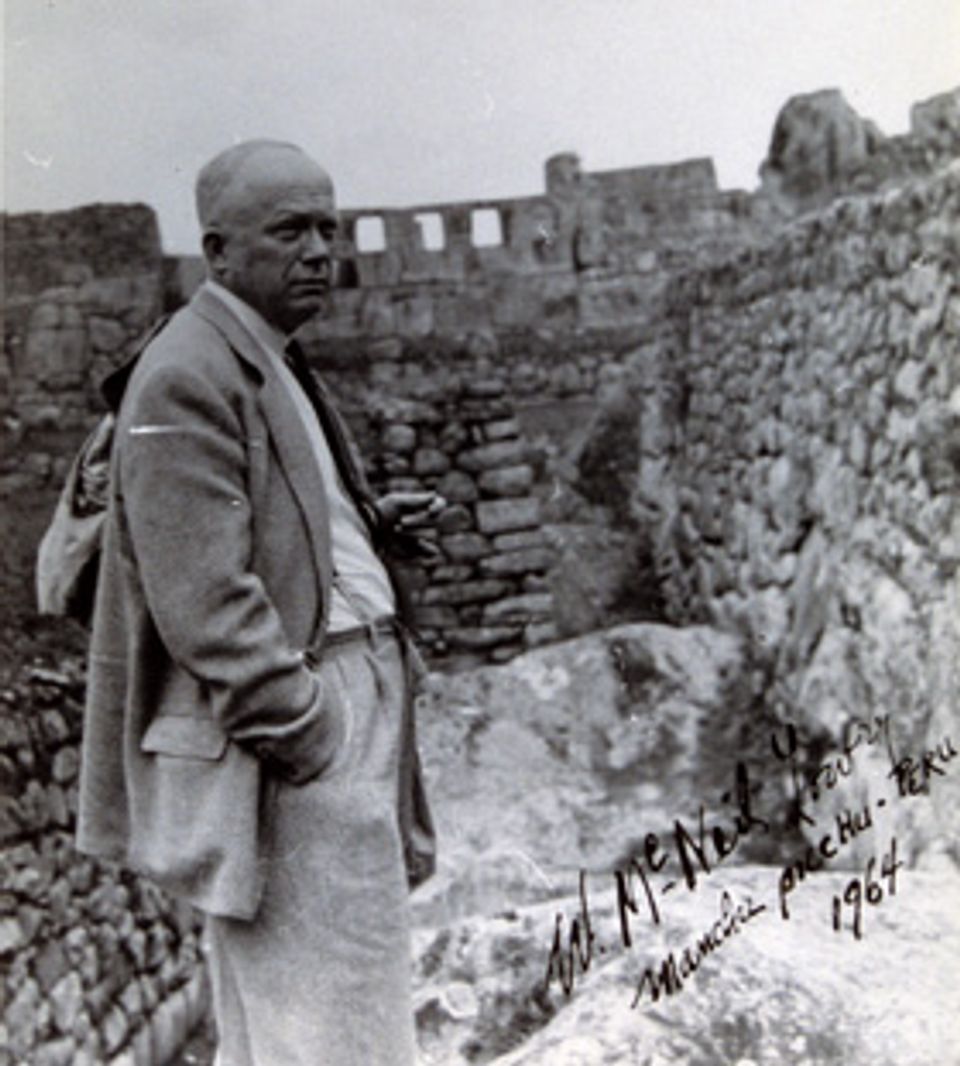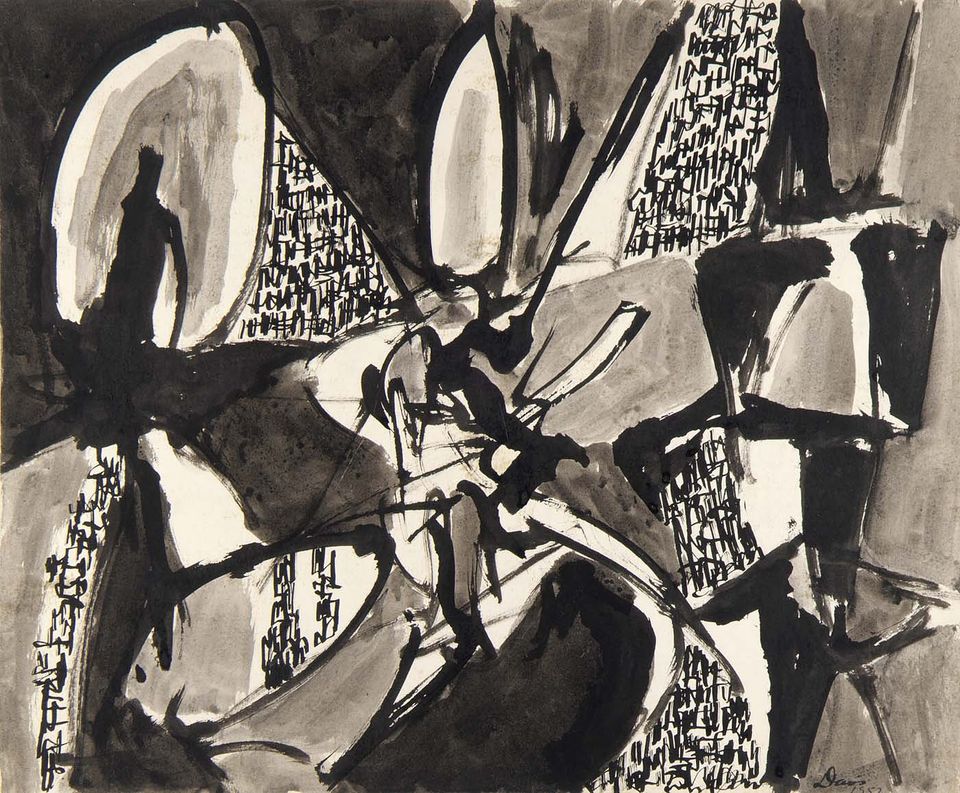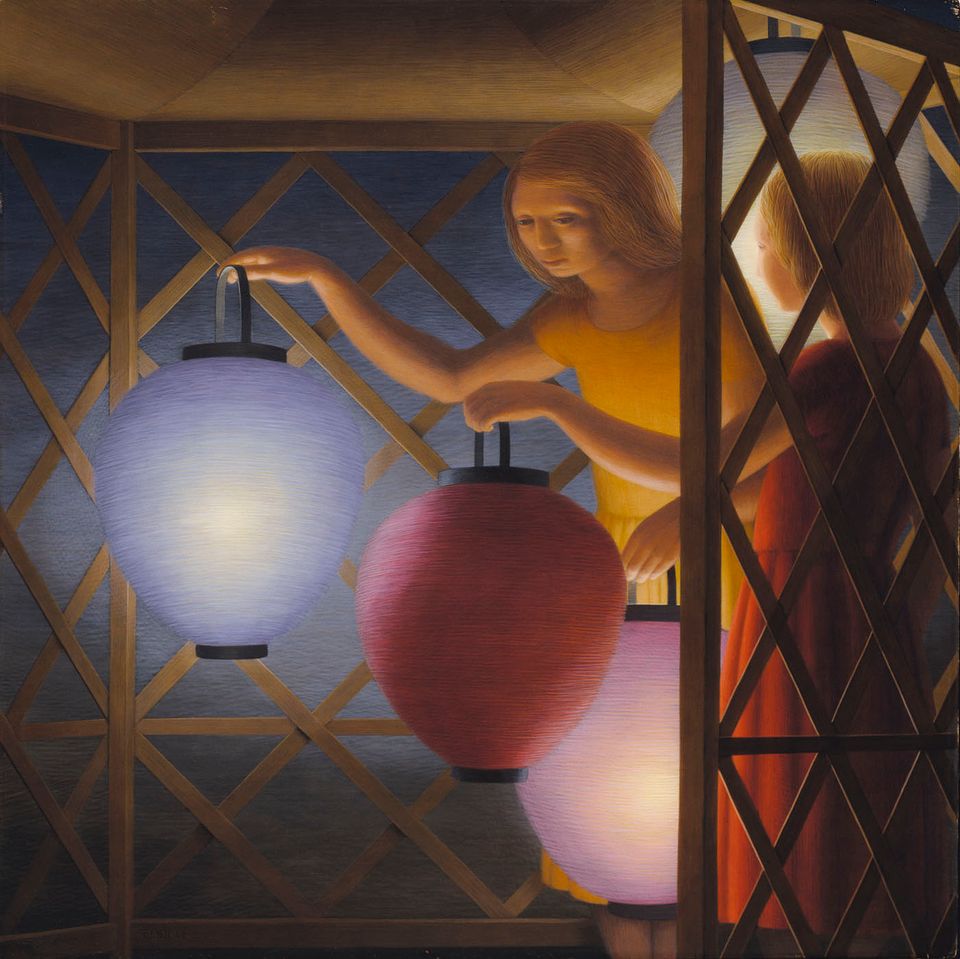Theodore Roszak

- Also known as
- Theodore J. Roszak
- Born
- Poznań, Poland
- Active in
- Chicago, Illinois, United States
- Biography
After art school, Roszak received a fellowship to go to Europe in 1929. He set up a studio in Prague, and on trips to France, Germany, and Austria learned of Purism and Constructivism and became fascinated with the Bauhaus principles of the integration of art and life. After two years, Roszak returned to New York and in 1938 taught at the Design Laboratory, an experiment to transplant Bauhaus principles and methods to the United States. Between 1936 and 1945, Roszak created constructions—three-dimensional and wall-mounted sculpture in which he eliminated all subject matter other than the uncompromising geometric form of the pieces themselves. Around 1945, however, Roszak abandoned Constructivism because it reflected a view of the world he took to be falsely harmonious. Seeking to reintegrate content into his work, Roszak began welding and discovered that surface effects achieved by accident suggested a world of meaningful associations. The forms of his late work, he said, "are meant to be blunt reminders of primordial strife and struggle, reminiscent of those brute forces that not only produced life, but in turn threatened to destroy it."
Virginia M. Mecklenburg Modern American Realism: The Sara Roby Foundation Collection (Washington, D.C.: Smithsonian Institution Press for the National Museum of American Art, 1987)
Works by this artist (2 items)
Videos
Recording Sound by Theodore Roszak combines painting and sculpture in a unique way. A three-dimensional plaster stage projects forward and backward from the canvas plane to a depth of about three inches. It's a miniaturized opera performed for the modern miracle of the phonograph. Roszak, an accomplished violinist, was so involved with music that he put musical references into many paintings.















